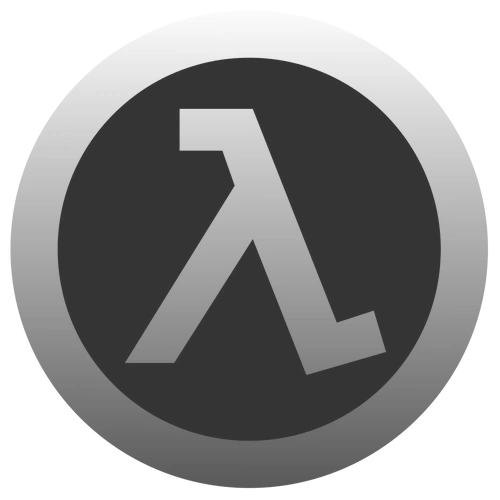(→Trivia) |
No edit summary |
||
| Line 28: | Line 28: | ||
The Hammer editor is used level designers to create new maps for Source-based games. Hammer is used to create geometry and to place objects (entities) in the game world. It can also be used to script events in maps, such as [[Overwatch Soldier]]s ambushing the player, via manipulation of entities. |
The Hammer editor is used level designers to create new maps for Source-based games. Hammer is used to create geometry and to place objects (entities) in the game world. It can also be used to script events in maps, such as [[Overwatch Soldier]]s ambushing the player, via manipulation of entities. |
||
| + | [[File:Hammereditor.png|thumb|left|Viewing D2_coast_12, a part of [[The Coast]], in the Valve Hammer Editor.]] |
||
| − | |||
The current version of Hammer, 4,0, supports both [[Source engine]] and [[GoldSrc]] games. However, placing an entity used in only one engine can cause errors. Those that create maps for GoldSrc usually use version 3.5, which is the last version that only support GoldSrc games. |
The current version of Hammer, 4,0, supports both [[Source engine]] and [[GoldSrc]] games. However, placing an entity used in only one engine can cause errors. Those that create maps for GoldSrc usually use version 3.5, which is the last version that only support GoldSrc games. |
||
Revision as of 04:32, 3 December 2009
| You can help by correcting spelling and grammar, removing factual errors, rewriting sections to ensure they are clear and concise, and moving some elements when appropriate. Visit our Cleanup Project for more details and, please, notify the administrators before removing this template. |
- "ERROR: Brush [brush-id] : bounds out of range"
- ―vbsp.exe error[src]
Valve Hammer Editor, formerly known as Worldcraft and now commonly called Hammer, is Valve Software's map creation program for their game engine, Source. Versions prior to 4 supported exclusively Goldsrc, Source's predecessor. It is freely available to anyone who has purchased a Source based game as a part of the Source SDK.
The current version of Hammer is 4.0.
Overview
The Hammer editor is used level designers to create new maps for Source-based games. Hammer is used to create geometry and to place objects (entities) in the game world. It can also be used to script events in maps, such as Overwatch Soldiers ambushing the player, via manipulation of entities.
Viewing D2_coast_12, a part of The Coast, in the Valve Hammer Editor.
The current version of Hammer, 4,0, supports both Source engine and GoldSrc games. However, placing an entity used in only one engine can cause errors. Those that create maps for GoldSrc usually use version 3.5, which is the last version that only support GoldSrc games.
In order to create a map for a certain game, Hammer must have a special file, called a .fgd file, associated with it. This file tells Hammer what entities the game uses so that it'll let the user select them. In 4.0, the .fgd files for official Valve games already come prepackaged into Hammer with the Source SDK, but for the GoldSrc games, the user must add the .fgd files manually.
Hammer can also be used to compile maps so that they can be played in game. To do this, Hammer runs the map through three (four in 3.5 and earlier) .exe programs; vbsp.exe, which renders the geometry, vvis.exe, which renders what geometry appears where, and vrad.exe, which renders the lighting. Versions 3.5 and earlier included an additional program, qcsg.exe, which renders the basic outline of the map for vbsp.exe to fill in. In 4.0, this has been merged with vbsp.exe.
Trivia
- Old versions of Hammer also supported Quake and Quake II. This is because of the similarities between the GoldSrc, Quake and Quake II engines.
- When first launched, the Hammer featured in the playable Half-Life 2 Beta plays a 3 seconds MIDI intro of the song "U Can't Touch This" by MC Hammer (named "hamrtime.mid"), an obvious play on the name of the artist, and the infamous sentence featured in the song, "Stop... Hammer time!".
External links
- Download link for Hammer 3.5
- Valve Developer Community, Official wiki dedicated to editing the Source engine.
- Zoner's Half-Life Tools, alternatives to the compiling tools included with the original Hammer Editor.
- TWHL - A large, active mapping community with support for both GoldSource and Source engines.
- Blue's news Archive - Many old Worldcraft and Quake related "news".
| Companies | Gearbox Software • Junction Point Studios • Valve Corporation |
|---|---|
| Production staff | Artists • Character models • Composers • Voice actors • Writers • Other |
| Software | Achievements • Compilations • Demos • Games (Half-Life • Multiplayer • Non-canon • Portal • Third-party) • Game Engines • HL HD Pack • Mods |
| Other Media | ApertureScience.com • Books (Lab Rat • Raising the Bar) • Fan content (Films • Games • Mods • Series) • Films • Merchandise • Preliminary Findings • Soundtracks (Songs • Composers) • The Final Hours (Half-Life • Half-Life 2 • Half-Life: Alyx • Portal 2) |
| Cut content | Prospero • Half-Life Alpha • Half-Life 2 Beta • Half-Life 2: Episode Three • Half-Life 2: Episode Four |
| Misc. | Canon • Development (Commentary • Half-Life 2 • Portal • Next Half-Life game) • Mr. Valve • Retcons |
